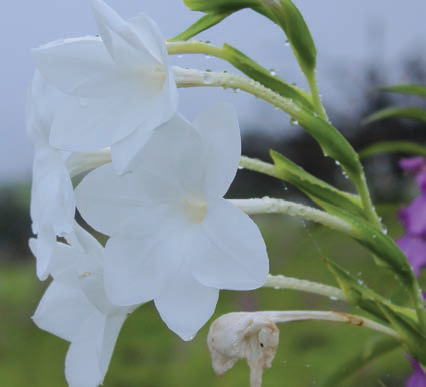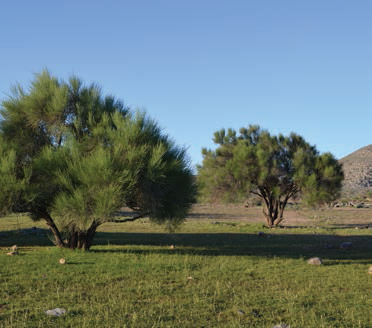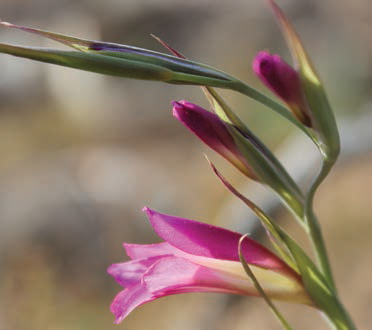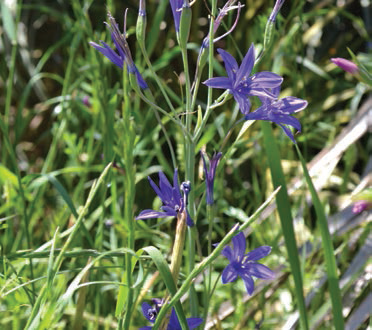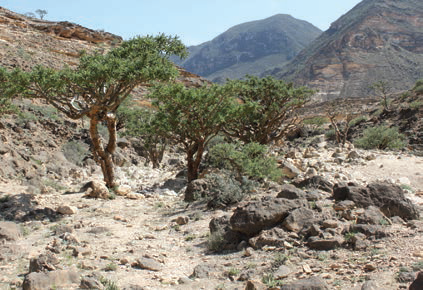Dr. Darach Lupton writes on creating an oasis for native plant conservation in Oman
Throughout their history botanic gardens have had a variety of changing roles. From the early medicinal and pleasure gardens to the vibrant gardens of the botanically fervent Victorian age to the modern, ultra high tech visitor attractions we see around the world today, botanic gardens have traditionally attracted visitors, gardeners and scientists through exotic plant displays, often showcasing collections from far flung corners of the globe. Although this is still the case in many places the overall scope and design of botanic gardens has shifted greatly from their early days.
In more recent times botanic gardens have become key players in both the conservation of plants and in the education of the people who come to see them. For example, they play a role in mitigating the effects of climate change and habitat loss. Botanic gardens are in some cases the last refuge for threatened plants, they often hold vital collections and knowledge as to the storage and cultivation of the world’s most fragile plant species. It is clear botanic gardens have moved and continue to move towards the frontlines of plant conservation and environmental education. It is these very issues that initiated and drive the design, construction and remit of the nascent Oman Botanic Garden.
Oman, a country of approximately 300,000 sq km lies on the south-eastern shores of the Arabian peninsula. It is a desert country, steeped in tradition and environmental beauty. The climate is harsh with summer temperatures in excess of 48C and an average annual rainfall of 100mm. One could be forgiven for assuming that an ultra-arid, baking hot county like Oman would possess a native flora dominated by only a few hardened, parched plants, wizened by their years beneath an unrelenting sun. This is a common misconception held by locals and visitors alike. Images of scorched landscapes, devoid of plant life, prevail in the minds of all but a few people. However, those of us privileged enough to spend their days in the mountains, deserts and wadis of Oman immersed in the bountiful wildlife can paint a very different picture. A picture of stunning, often unique plant life, where strange natural forms, colours and aromas combine to produce a wealth of plants and plant communities unparalleled in the region. There are ancient trees, giant succulents, parasites, lush ferns, thorny shrubs, enormous grasses, minute herbs and numerous regionally and globally endemic (found nowhere else) plants. To date over 1,200 native plant species have been recorded in Oman, however ongoing research by Oman Botanic Garden indicates that this figure may be a signifi cant underestimation.
So how can an ultra-arid country like Oman contain such floral diversity? The answers to this question are complex and dependent on the interaction of a host of factors. It is perhaps better to think of the answer in terms of an intricate web of prehistoric land movement, historic plant migration and evolution, geological and landscape processes, climate, habitat formation and human-environmental interactions. The interaction of these processes and conditions contribute significantly to Oman’s inimitable botanical diversity.
Journeying from north to south or east to west one begins to grasp the wealth of habitats throughout Oman’s landscape. In northern Oman, the Musandam peninsula, with its high mountains and plateaus, provides a home for a dazzling array of herbaceous perennials and several important tree species. Plants of note include the Arabian almond (Prunus arabica) [photo 1], the miracle tree (Moringa peregrina) and numerous beautiful bulb species, e.g. Moraea Sisyrinchium Gladiolus italicum [photo 2], Ixilirion tataricum [photo 3], and Leopoldia longipes.
Moving south from Musandam, the magnificent Al Hajar mountains rise from the coastal plains forming breathtaking peaks such as the renowned Jabal Al Akhdar (2400m asl) and Jabal Shams (3000m asl). The mountains abound with wadis, high altitude alpine ridges, expansive plateaus and rolling slopes in on which many plants live and flourish. The soaring slopes and ridges of the Western Hajar are home to beautiful, though sadly diminishing stands of ancient Juniper (Juniperus servachanica) and Olive (Olea europea) trees. In addition, the Al Hajar mountains contain an extraordinary range of manmade agricultural terraces, growing everything from apricots to wheat. The ancient terraces with their intricate web of water channels (al falaj) irrigate the abundant crops and fruit and inadvertently provide moisture and shade to many opportunistic plants, including some delightful ferns (e.g. Adiantum capillis veneris) [photo 4], orchids (e.g. Epipactis veratrifolia).
The mountains of Dhofar in Southern Oman unquestionably contain the real jewels of Oman’s botanical diversity. These elegant massifs with their precipitous cliffs and cavernous wadis are drenched by the impenetrable fog of the summer monsoon (Khareef), which from June to September transforms the seaward facing slopes into dense canopies of deep green woodland and lush understory vegetation. It is in Dhofar where we see the true uniqueness of Oman’s flora. The mountains are home to numerous enigmatic species, many of which have affinities with East Africa. The southeastern slopes are blanketed by the graceful Anogeissus dhofarica [photo 5], which is a highly attractive and hugely important deciduous tree. Beneath the dense stands of Anogeissus the ground is thick with lush swathes of Balsam (Impatiens balsamina) and the brilliant white flowers of Gladiolus (Gladiolus candidus) [photo 6]. The beautiful Frankincense tree (Boswellia sacra) [photo 7] with its russet coloured peeling bark and distinctively dissected leaves oozes a highly fragrant sap, which has permeated cultural and religious practices for millennia and is still an important part of contemporary Omani life, grows very happily in the drier wadis throughout the mountains.
Currently, under construction, the Oman Botanic Garden (OBG) aims to capture and showcase Oman’s native plant diversity. Growing and displaying only native plants on this scale is a rare and challenging undertaking. The OBG site is 420ha, about 20% of the site will be utilised to create and display Oman’s rich flora. The remainder of the site will be maintained as semi-managed wilderness. Currently, there are two states of the art biome structures being designed. They will house the plants of Dhofar and the plants and crops from the high mountains in northern Oman. The remaining plants will be displayed in carefully created external habitats designed to closely mimic Oman’s most spectacular landscapes, including, wadis, sand deserts and escarpments.
The project is very challenging, though endlessly exciting. Plants which have never been cultivated before must be first collected as seed (or cuttings in some cases) from the wild. Extensive location, taxonomic and environmental data are recorded with each plant collected. To date, thousands of accessions have been added the garden’s collection. Through endless experimentation and some trial and error tens of thousands of plants have been grown from seed and are currently flourishing in the Garden’s burgeoning nursery. OBG contains a meticulously managed herbarium and seed bank, both of which contribute significantly to plant conservation and education in Oman and beyond.
OBG is the first of its kind in the region and hopes to lead the way for plant conservation and environmental education in Oman and the wider Middle East. The project and its staff are growing in strength rapidly and are well on their way to achieving their aims and aspirations.
As with all gardens, Oman Botanic Garden is continually evolving and developing. New ideas and novel approaches to collecting, growing and displaying native plants are emerging on a daily basis. It is a hugely ambitious project and ground-breaking in many respects. It is a real privilege to work on such an enormously challenging project. The learning curve is steep and at times frustrating but the rewards and experiences are second to none. ✽


